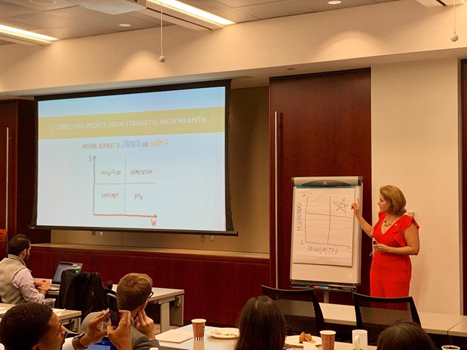AABPA Fall 2019 Symposium: "Navigating Turbulent Times"
Takeaways and Speaker Presentations
On November 13th, budget and program analysts gathered for AABPA’s 2019 Fall Symposium at the IBM Center for the Business of Government in Washington, DC. Below are key takeaways from the event along with links to speaker presentations.

Economic and Budget Outlook
Speakers: Christi Hawley Anthony, Chief of Projections Unit, Budget Analysis Division, Congressional Budget Office, and Bob W. Arnold, Chief of Projections Unit, Macroeconomic Analysis Division, Congressional Budget Office
Link to presentation (here)

Highlights:
- Bob and Christi’s presentation provided an overview of the Congressional Budget Office’s most recent budget and economic projections, which were published on August 21. In those projections, the federal budget deficit is nearly $1 trillion in 2019 and averages $1.2 trillion each year between 2020 and 2029. Because of persistently large deficits, federal debt held by the public is projected to grow steadily, reaching 95 percent of gross domestic product (GDP) in 2029.
- Real GDP is projected to grow by 2.3 percent in 2019, supporting strong labor market conditions that feature low unemployment and rising wages. Economic growth is projected to slow to an average of 1.8 percent through 2029, which is less than the long-term historical average. That slowdown occurs primarily because the labor force is expected to grow more slowly than it has in the past.
Managing Uncertainties: Challenges, Tools, and Opportunities
Speakers: John Kamensky, Senior Fellow, IBM Center for the Business of Government (Moderator); Sandra Beattie, First Deputy Director, Division of the Budget, New York State; Diane Lim, Senior Advisor, Penn Wharton Budget Model; and Holly Sun, Budget Administrator, Office of Budget, Howard County (Maryland) Government

Highlights:
- Diane detailed how high federal deficits and debt and low interest rates are highly unusual during times of national economic health. Deficit financing usually declines during periods of economic expansion because economic growth naturally raises revenue and reduces safety-net spending as a share of GDP. Additionally, there is little policy rationale for deficit-financed "stimulus" spending when the economy is in full employment. This position of high deficits and debt, as well as low interest rates, has the potential to reduce the federal government’s capacity to use spending increases, tax cuts, and further interest rate reductions to respond to future swings in the business cycle. It also exacerbates and postpones addressing longer-term federal budget imbalances.
- John discussed how states collectively have seen improved fiscal conditions recently, but faced a long road to recovery and spending is still less than 2008 levels in roughly half of states. In fact, Sandra noted that many states and localities are still feeling the effects of the Great Recession. While overall, states have higher revenue than they had before the recession, nearly a dozen are still behind their pre-recession peak, and funding in specific areas as whole, such as higher education, remains below pre-recession spending. This has reshaped many states’ budgets and left them with less room to maneuver in the event of future economic downturns.
- Holly discussed the National League of Cities’ report on the state of local fiscal conditions. Higher fixed costs (such as debt servicing), an aging population, and slow revenue growth were reported to have increased pressure of local budgets. Two-thirds of big cities now predict a recession will hit in 2020 or 2021.
- Sandra detailed how New York has taken specific actions to better positioned itself to combat the next economic downturn, including limiting property taxes to two percent, absorbing local Medicaid cost growth, dedicating internet sales tax revenue to local government, and limiting state spending growth to two percent annually for nearly a decade. The state has also worked to boost its financial reserves, which are one of states’ chief tools to prevent emergency spending cuts and tax increases, and fund its pension liabilities at more than 95 percent.
- Holly highlighted two actions that state and local government can take to help better gauge their preparedness for an economic downturn: 1) stress-testing budgets under different economic scenarios and 2) long-term planning to identify potential fiscal challenges on the horizon.
Public Service in the Selfie Age
Speaker: Annemarie Spadafore, Executive Coach and Senior Leadership Facilitator, Spark LLC
Link to presentation (here)

Highlights:
- A VUCA world – or one that is volatile, uncertain, complex, and ambiguous – needs dedicated leaders committed to their own professional growth.
- Transformative and Compelling (T&C) leaders create meaning for themselves and those they lead to overcome challenges; demonstrate BOTH high credibility (strength) and high emotional connection (warmth); model and encourage pro-social behaviors in the workplace; utilize an ‘outward’ mindset and lead from their values and foster an environment that encourages others to do the same.
|